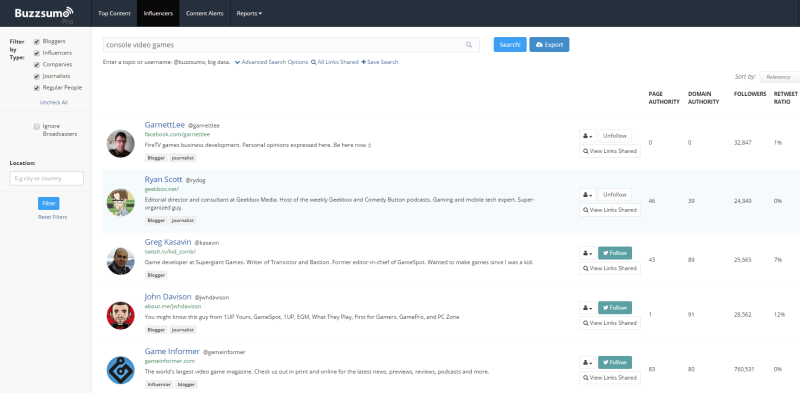Real Marketing In SEO: Building Links For Your Audience
Columnist Andrew Dennis reminds us that when you focus on your audience, the links you get will be valuable, regardless of SEO.

You should build links with an audience-first mindset.
In other words, every single link you build should be intended for your audience. If you ever find yourself obtaining links you wouldn’t want your audience to find, you’re likely being manipulative — or, at the very, least building worthless links.
Sometimes, link builders focus too much on how Google values links. I’m not suggesting you forget Google when you build links — everyone is well aware of the power links have in Google’s algorithm — but rather that you pursue links with an audience-centric focus.
There are several tangible benefits to approaching link acquisition with an audience-first mindset:
- Focusing on your audience creates additional marketing value.
- An audience-first mentality guides link prospecting.
- Centering your link strategy around your audience leads to better links.
When you focus on acquiring links for your audience, you’re doing real link building, and real marketing.
Focusing On Your Audience Creates Additional Marketing Value
Implementing an audience-focused mentality into your link strategy will create additional marketing value outside of SEO.
When you build links just for the sake of links, you often only want to get the link and be done. All you care about is link equity, and this often leads to pursuing less relevant and authoritative sites where your audience isn’t truly active. You’re just acquiring another link to help boost your Google rankings and then moving on to the next link.
Conversely, when you focus on your audience and create links they’ll actually encounter, it’s much more akin to real marketing. If other marketing opportunities present themselves, you’ll actually want to follow up, because it represents a real chance to engage with your audience.
When you focus on your audience, the links you get will have a higher likelihood of being valuable, regardless of SEO. A link on a site where your audience regularly engages will still be useful, even if it has no value for search.
An Audience-First Mentality Guides Link Prospecting
Focusing on audience discovery will guide your link prospecting efforts.
How can you find a better link prospect than a site where your audience regularly visits and engages? Spoiler alert: You can’t.
If you focus on finding where your audience lives online, you’ve practically already done the prospecting portion of the link building process. If a site is relevant to your audience, it’s a qualified link prospect and well worth earning a link from.
A traditional link prospecting philosophy dictates you start by finding sites relevant to your site. This strategy makes sense from a strictly SEO perspective, but if you want real marketing value (along with SEO benefits) you should look for opportunities to engage with your audience. Determine relevancy by whether or not your audience actively engages on a site.
The processes you use for audience discovery will produce relevant and promising link prospects.
Audience Discovery Leads To Better Links
Building links with an audience-first mentality will help you obtain higher-quality links.
While there are a number of factors that go into determining the quality of an individual link, one of the most significant is relevance. How could you build a more relevant link than one that focuses on target audience every step of the way? An audience-focused mentality leads to better links because:
- The links are on sites that are popular with your target audience. That doesn’t have to mean the most authoritative, just relevant; if your audience is there, you should be too.
- The links point to valuable content/pages. Building links for your audience forces you to present content or pages that are actually useful to them. Some ways your content could be valuable include: solving a pain point, offering more information on a desired topic, pointing to a relevant product/service, etc.
- The links ease navigation for your audience. Find where your business is already being talked about and mentioned, and make it easy for your audience to get to your site.
Also, the aforementioned Google is pretty big on this relevancy thing too, and these are the types of links Google wants to count. Check out this interview James Norquay did with ex-Google employee Andre Weyher. Andre had this to say in regards to relevancy (PR refers to PageRank):
[blockquote cite=”Andre Weyher”]Not only this but take PR for example, getting a link from a high PR page used to always be valuable, today it’s more the relevance of the site’s theme in regards to yours, relevance is the new PR.[/blockquote]
If you apply an audience-focused approach to link acquisition, the search engines (Google) will follow. Google aims to please their users by returning the best possible search results, and because of this they respond to user behavior, not vice versa.
All marketing should be done with an audience-first mentality, including link building. The traffic that comes from audience-based links will be more qualified, and that means increased conversions. Links can serve a multitude of functions online, but links that lead directly to conversions are unparalleled from a business perspective.
3 Common Methods For Audience Discovery
All right, so building links with an audience-centric mindset is better than just going after any link you can find. But how do you create an audience first mindset? You start by locating sites your audience is consistently engaging with. Here are a few different methods for finding where your audience is active:
- Find influential websites with BuzzSumo
- Find who’s linking to competitors with backlink analysis
- Find mentions of your company/brand
Let’s look at these different ways to execute audience discovery.
1. Using BuzzSumo
BuzzSumo is a fascinating tool that can be used for a variety of purposes, but the application I will highlight here involves audience research.
BuzzSumo allows you to find the top shared content for a given term, which will help you find the sites and communities where your audience lives online. The way we will find these sites is by navigating to the influencers section of BuzzSumo. (Note: I will be using a paid BuzzSumo PRO account, but if you don’t have BuzzSumo and would like to test out this process there is a free trial version)
To get to the influencers page, we simply click on the tab labeled “Influencers”:
After you arrive at the influencers page, you can search for a topic or keyword specific to your niche. Using this function will allow you to find the most popular social accounts associated with your industry.
For this example, let’s use “console video games”. Here are the results we get for “console video games”:
BuzzSumo gives us a list of influential people (based off social data) related to video games.
But how do we use that knowledge to find sites that your audience might frequent?
Well, you can look at the links included in these influencers’ social bios as many of them will also have their own influential website. Also, you will likely find the official social accounts of prominent websites listed here (with a link to said site). Not every bio link will be relevant, but this is a great place for audience discovery.
Quickly scanning the top seven results from our video games example, I can see there are two very promising link prospects:
Looking at the follower counts for each of these Twitter handles, we can see that they are very popular with a video game focused audience:
Now that we’ve established these sites have large followings, we can also look at the potential SEO value a link from them might have. We can get an idea of SEO value by looking at the Domain Authority of each:
Now of course, you still need to manually dig around within each site before considering outreach, but we have achieved what we set out to do – found a viable link prospect for an audience interested in console video games!
2. Competitive Analysis
Looking to your competitors can be another great place for audience research.
After all, if they are truly your competitors these companies will share the same audience as you. In terms of audience research, you can discover great link opportunities by examining competitor backlink profiles. There are a number of backlink tools that will give you the necessary data, including:
Because competitor backlink analysis is an older tactic that’s been covered numerous times, I won’t rehash it here. Instead, I recommend you check out this excellent walkthrough by Stephen Croome.
Sifting through your competitors’ backlinks will lead to you some sites that are relevant to your audience. However, keep in mind that it’s likely there will be spammy sites in your competitors’ link portfolios as well, so make sure to vet every site individually.
Along with vetting sites for quality, you need to also check for audience engagement. Some factors worth looking at include:
- Number of comments on blog posts
- Social shares on content
- How many people follow the site’s various social accounts
- Number of newsletter subscribers the site has (if you can find it)
- Traffic data via SEMrush
Even if a site passes your initial prospecting and looks solid on the surface, you still need to make sure your audience is there. For more on evaluating a link prospect check out this extensive guide from Adria Saracino.
3. Mention Monitoring
Finding where your audience is talking about you online is another way to find where your audience lives online.
Mention monitoring will not only show where your audience lives online, but will also offer insight into how they feel and talk about your company or brand. Locating mentions of your business will provide more than just link opportunities as you can join the conversation and engage with your audience.
There are a few different options when it comes to finding these mentions, including:
- Mention
- Fresh Web Explorer (Moz)
- Sprout Social
- Google Alerts (Free)
You can also use advanced search modifiers in Google search to track mentions. While you should absolutely be tracking brand mentions, don’t forget to look for other unbranded mentions related to your company as well. Some examples would be:
- Prominent employees
- Product mentions
- Company sponsored charities/programs/events
- Etc.
What better place could there be to find audience-focused link opportunities than on sites/communities where your audience is already talking about you?
Again, mention monitoring is another technique that’s been covered extensively. You can find a number of helpful guides discussing this strategy here.
TL;DR
You should build links for your audience.
Rather than focusing solely on how Google will judge your links, you need to have an audience-first mentality when it comes to link development. Approaching your link strategy with an audience-first mindset will aid link acquisition and provide numerous other benefits. There are three key reasons why an audience-first approach is valuable.
- Focusing on your audience creates additional marketing value
- An audience-first mentality guides link prospecting
- An audience-first mentality leads to better links
To create an audience-focused mindset you must start with audience discovery. Three common methods for audience discovery include:
- Find influential websites with BuzzSumo
- Finding who’s linking to competitors with backlink analysis
- Finding mentions of your company/brand
Contributing authors are invited to create content for Search Engine Land and are chosen for their expertise and contribution to the search community. Our contributors work under the oversight of the editorial staff and contributions are checked for quality and relevance to our readers. The opinions they express are their own.
Related stories




